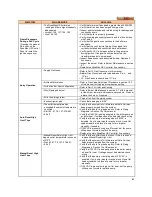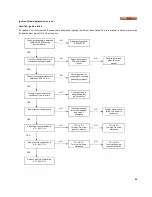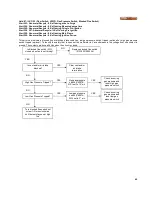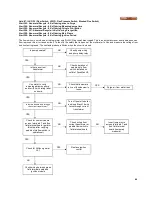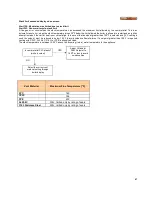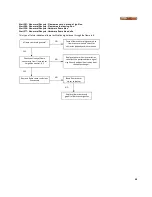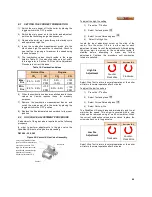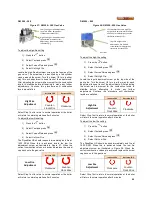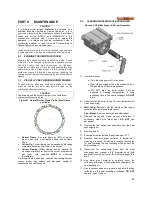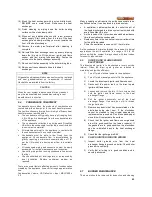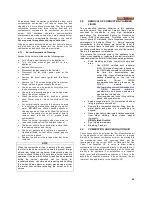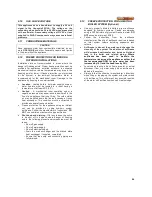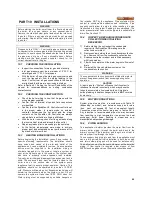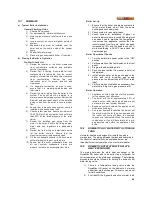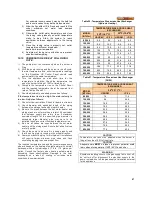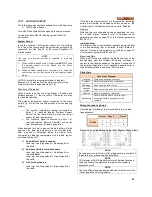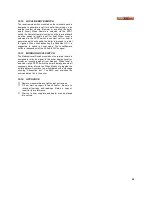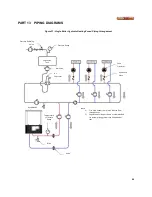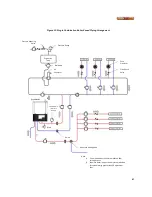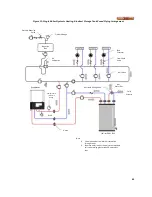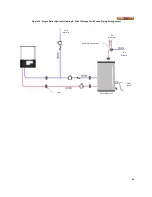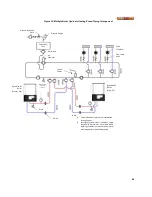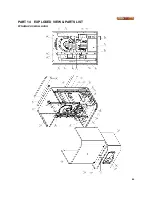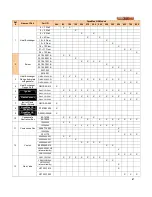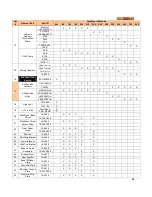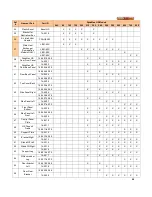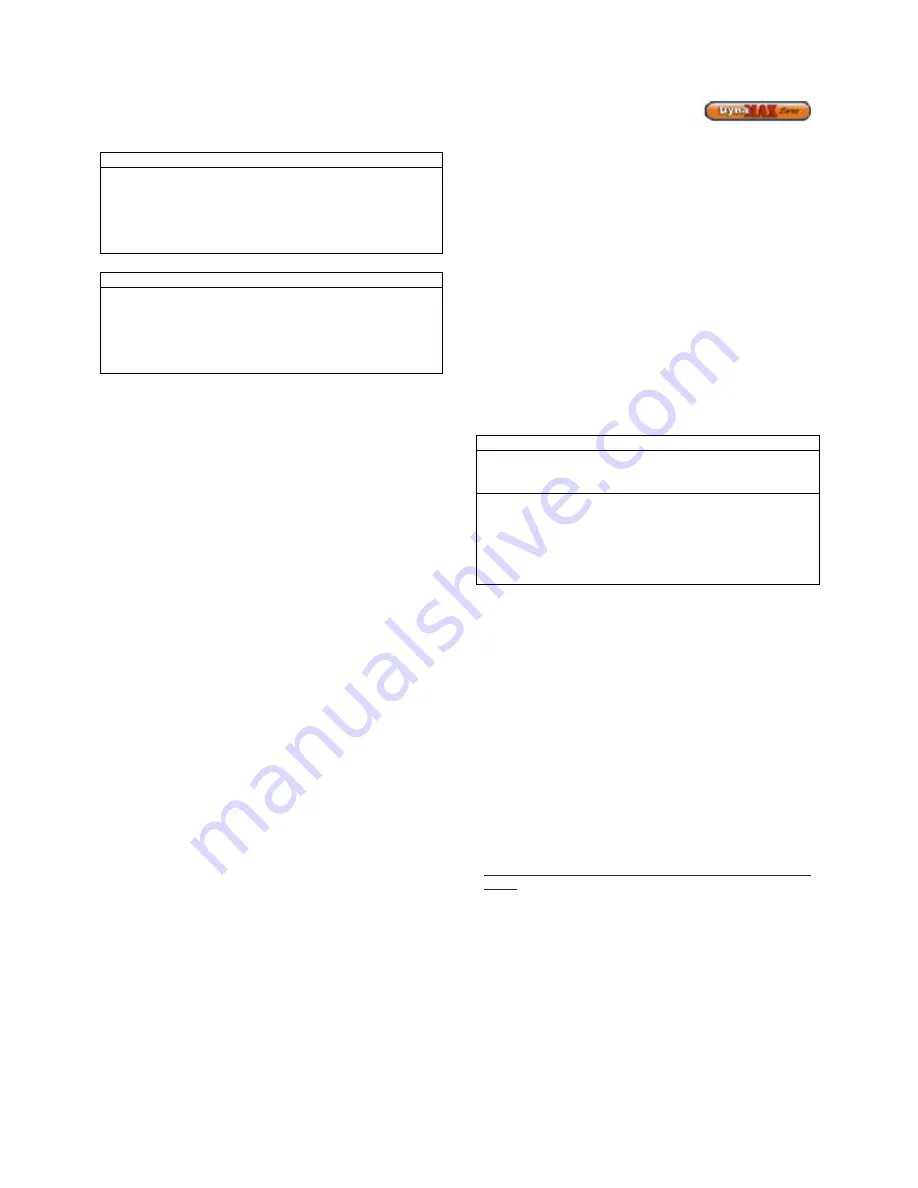
55
PART 10 INSTALLATIONS
WARNING
Before starting the boiler, smell near the floor and around
the boiler for any gas odours or any unusual odour.
Remove the stainless steel jacket and smell the interior of
the boiler. If there is any sign of a gas leak, do not proceed
with startup. Repair all the leaks before attempting to start
the boiler.
WARNING
Propane boilers ONLY – Your local propane supplier adds
an odorant to the propane gas to allow for propane gas leak
detection. In some cases, the added odorant can fade and
the gas may not give off any noticeable odour. Before
startup have the local propane supplier check for the
correct odorant level in the gas.
10.1
CHECKING THE INSTALLATION
•
Inspect the connections for water, gas and electricity.
•
Inlet gas pressure must be a minimum of 3” W.C. for
natural gas and 11” W.C. for propane.
•
With the boiler off, open the main gas supply valve and
vent the trapped air from the piping leading to the
boiler. Confirm that all gas connections to the heater
are tight and that there are no missing test plugs.
Refer to Section 8.1 Setting the Correct Combustion of the
manual for recommendations on setting combustion
characteristics
10.2
CHECKING THE CONSTRUCTION
•
Check the boiler wiring to see that it agrees with the
wiring diagram supplied.
•
Confirm that all terminal strips and field connections
are identified.
•
Confirm that the DynaMax HS Controller control is set
in the proper mode. In remote mode an external
controller determines the set point and the stage
contacts on the DynaMax HS Controller are always
closed. Auto reset limits are fixed in all Modes.
•
With the boiler running, check for flue gas leaks along
the inner cabinet joints and around the flue outlet.
•
Repair any leaks prior to proceeding to the next step.
•
At the factory, adjustments were made to achieve
proper input and acceptable burner performance at full
input and at minimum input.
10.3
HEATING BOILER INSTALLATIONS
Before beginning the installation, consult local codes for
specific plumbing requirements. The installation should
have unions and valves at the inlet and outlet of the
appliance so it can be isolated for service. An air separation
device must be supplied in the installation piping to
eliminate trapped air in the system. Locate a system air
vent at the highest point in the system. The system must
also have a properly sized expansion tank installed.
Typically, an air charged diaphragm-type expansion tank is
used. The expansion tank must be installed close to the
boiler and on the suction side of the system pump
(appliance Inlet) to ensure proper operation. Caution: This
appliance should not be operated at less than 12 PSIG
cold. Pressure will rise when hot. Expansion tank sizing will
determine the pressure when the system is hot. Do not
operate the system at less than 18-20 PSIG when hot.
Water piping must be supported by suitable hangers or
floor stands, NOT by the appliance. Pipe systems will be
subject to considerable expansion and contraction. Pipe
supports could allow the pipe to slide resulting in noise
transmitted into the system. Padding is recommended. The
boiler pressure relief valve must be piped to a suitable floor
drain. See Section 4.11.
10.4
INSPECT & RECHARGE CONDENSATE
COLLECTION/NEUTRALIZING
RESERVOIR
1) Before starting the unit inspect the condensate
reservoir in the DynaMax HS making sure the
collection box is intact.
2) Remove screw holding lid on to condensate collection
box. Remove lid from the condensate collection box
3) Examine neutralizer medium and refill as necessary
with fresh medium
4) Fill with fresh water until the water begins to flow out of
drain
5) Re-install the lid and hold-down screw on the
condensate collection box.
WARNING
The condensate collection box must be filled with water to
prevent flue gas emissions from escaping during boiler
operation.
CAUTION
A leak in a boiler “System” will cause the fill system to
introduce fresh water constantly, which may cause the
tubes to accumulate a line/scale build up. Lime/scale
buildup leading to heat exchanger failure is NOT covered
by warranty.
10.5
WATER CONNECTIONS
System pipe size must be in accordance with Table 10
(depending on model) and, between supply and return
lines, must not exceed 50 feet of equivalent length.
Connection sizes at the heater are given in Tables 3 & 5.
Any reduction in recommended pipe size may decrease
flow resulting in high temperature rise across the heat
exchanger, boiler noise, flashing to steam and non-
warrantable heat exchanger damage.
10.6
PIPING LENGTHS
The appliance circulator provides the water flow from the
primary boiler piping, through the boiler and back to the
primary system. Pipe diameter and length are critical to
ensure proper flow through the boiler.
The secondary loop piping to and from the appliance must
have a fully ported ball valve installed in both the supply
and return side piping and will be used for isolation only.
The ball valves must be the same diameter as the installed
piping. If flow control is required, other means of flow
control such as globe valve or flow setter should be used.
Summary of Contents for DynaMax DMH081
Page 2: ......
Page 68: ...65 PART 14 EXPLODED VIEW PARTS LIST DYNAMAX HS WALL HUNG...
Page 69: ...66 DYNAMAX HS FLOOR MOUNT...
Page 76: ...73 PART 15 ELECTRICAL DIAGRAMS 15 1 DM 80 299 INTERNAL WIRING DIAGRAM...
Page 77: ...74 15 2 DM 399 800 INTERNAL WIRING DIAGRAM...
Page 78: ...75...

